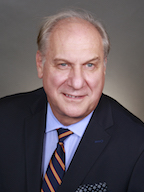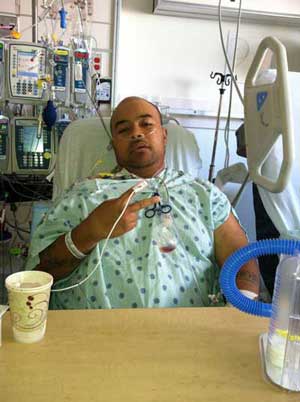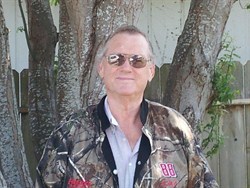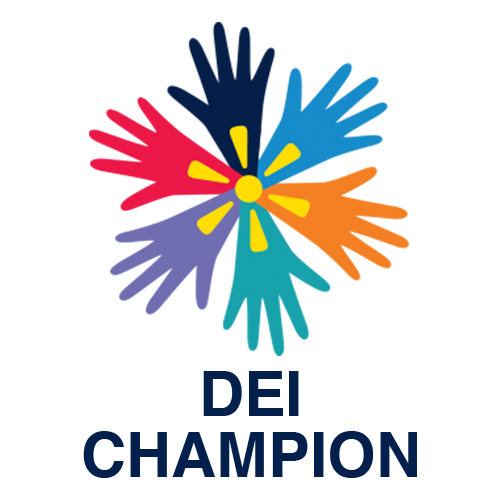About Us
People
Education & Training
Resident Training
- Biodevice Innovation Pathway
Conferences & Symposiums
- Innovation Grand Rounds
- Past Grand Rounds
Resident Q&A
- Victoria Lyo, M.D., MTM
- Isabelle Chumfong, M.D.
- Willieford Moses, M.D.
Resources
Spotlight
Innovator Profiles
- Michael Harrison, M.D.
- Georg Wieselthaler, M.D.
- Hobart Harris, M.D., M.P.H.
- Matthew Lin, M.D.
Highlighted Projects
- SmartDerm
- Bioartificial Kidney
Multimedia
- Featured Videos
Project Portfolio
Fall 2018
- Tabla
- Glacier Medical
- ReValve Med
Spring 2017
- Percutaneous AV Fistula
- Tracheostomy Alarm
- Augmented Surgical Vision
Fall 2015
- Roboimplant
- Sentinel Bandage
- EMAP
- Hub Cap
Spring 2015
- Lamprey
- HEAL
- Bioimpedance Sensor
- b-Redy App
- Endoscopic Grasper
- MCAD
Other Active Projects
- Myoseal
- Neotune
- The Kidney Project
- SmartDerm
- Bioartificial Pancreas
- Magnap
- Magnamosis
- Amnioseal
- Magnetic Mini-Mover
- Pulsar
- Pre-Sure
- Clabsi
News & Events
Contact Us

Georg M. Wieselthaler, M.D.
Contact Information
Academic Office
500 Parnassus Avenue, MUW-405, Box 0118
San Francisco, CA 94143
Tel: (415) 353-8196
Email:[email protected]
Admin:[email protected]
500 Parnassus Avenue, MUW-405, Box 0118
San Francisco, CA 94143
Tel: (415) 353-8196
Email:[email protected]
Admin:[email protected]
Education
1976 - 1978 Graduation from College for Electrical Engineering, Vienna, Austria Electrical Engineering Electrical Engineering
1978 - 1987 Graduation from Medical School 1987, University of Vienna, Austria MD
Residencies
- 1988 - 1989 Military Service at the Department of Surgery, Military Hospital, Vienna, Austria
- 1989 - 1995 Residency and Surgical training at the 2nd Department of Surgery, Univeristy of Vienna (Chair: Univ. Prof.Dr. Ernst Wolner)
Fellowships
- 1998 - 2000 "Vienna Heart Transplant Program" (Program Director: Univ. Prof.Dr. G. Laufer)
- 2000 - 2003 "Vienna Lung Transplant Program
- (Program Director: Univ. Prof. Dr. W. Klepetko)
- 1996 - 1997 Advance Fellowship: Staff Surgeon at the Dept. of Cardiac Surgery, St. Pölten Hospital, Austria
- 1997 - 1998 Advance Fellowship: Staff Surgeon at the Dept. of Cardiac Surgery, St. Pölten Hospital, Austria
Clinical Expertise
- Acute Aortic Dissection Repair
- Aortic Valve Repair & Replacement
- Arrhythmia
- Coronary Artery Bypass Grafting (CABG)
- End Stage Heart Failure
- Heart Transplantation
- Minimally Invasive Cardiac Surgery
- Minimally Invasive Valve Surgery
- Mitral Valve Repair & Replacement
- Myocardial Revascularization Surgery
- Off-Pump Coronary Artery Bypass (OBCAB)
- Thoracic Aneurysm Repair
- Thoracic Aortic Reconstruction
- Ventricular Aneurysm
- Ventricular Assist Devices (VAD)
Foreign Languages Spoken
- English, German
Biography
Georg M. Wieselthaler, M.D. is a heart transplant surgeon and one of the world´s leading experts in mechanical circulatory support for end stage heart failure patients. A Professor of Surgery at UCSF and Director & Surgical Chief of Cardiac Transplantation and Mechanical Circulatory Support, Dr. Wieselthaler has performed more than 350 heart transplants and developed extensive expertise in the implantation of numerous types of ventricular assist device (VAD) systems at the Medical University of Vienna.
Dr. Wieselthaler graduated with a degree in electrical engineering from the College for Electrical Engineering in Vienna, Austria and received his M.D. as well from the University of Vienna, Austria. He did his residency and surgical training at the 2nd Department of Surgery, University of Vienna and received advanced training in transplantation in the Vienna Heart Transplant Program and Vienna Lung Transplant Program. He also completed advanced fellowships as staff surgeon at the Dept. of Cardiac Surgery in St. Pölten Hospital, Austria.
Dr. Wieselthaler has published numerous articles in peer-reviewed journals and has trained surgeons worldwide in implantation techniques and the use of varied pulsatile and continuous flow ventricular assist devices. He is member of numerous national and international medical scientific societies and is President-Elect of the International Society for Rotary Blood Pumps.
He is also a member of the Board of the European Society for Artificial Organs and Past President of the Austrian Society for Implantology and Tissue integrated Protetics. In April 2011, Dr. Wieselthaler was named Director of the International Society for Heart and Lung Transplantation. He is a frequent speaker and has served as chair for numerous national and international scientific conferences devoted to mechanical circulatory support and transplantation.
Research Overview
In 1984, while still in medical school, Dr. Wieselthaler became involved in the Ventricular Assist Device (VAD) Program at the University of Vienna and began working in the Biomedical Laboratory on the development of the driving unit for the "New Vienna Total Artificial Heart (TAH)". After graduation, Dr. Wieselthaler became aware of the advantages of rotary blood pumps and organized the world´s the first "International Workshop(s) on Rotary Blood Pumps" in the years 1988 and 1991 in Austria. Out of these meetings, the International Society for Rotary Blood Pumps was founded in 1992 with Dr. Wieselthaler acting as Secretary General for the organization for many years.
Dr. Wieselthaler and colleague Dr. Heinrich Schima, a biomedical engineer, then investigated and developed miniaturized centrifugal pumps over15 years in the Biomedical Laboratories of the University of Vienna. Dr. Wieselthaler thereafter became primary surgeon at the Medical University of Vienna where implanted various types of VAD systems and supervised patient care. He developed extensive expertise with pulsatile systems like Novacor LVAS and has had one of the longest supported patients on the device (over 4 1/2 years). He also developed the Thoratec paracorporeal and implantable VADs. One of his patients was supported more than 3 years on the world´s first full implantable VAD in the Arrow LionHeart CUPS Trial.
In 1998, Dr. Wieselthaler implanted the world's first implantable, miniaturized axial flow pumps, the MicroMed-DeBakey VAD and he has since implanted more than 80 patients with this device. Many of Dr. Wieselthaler´s leading scientific papers originated his early experience with the world´s first nonpulsatile pump, articles still cited by colleagues. Dr. Wieselthaler also served as Principal Investigator and implanted the world´s first implantable, magnetically suspended centrifugal left ventricular assist device (LVAD), the "TERUMO DuraHeart LVAD".
In 2003, Dr. Wieselthaler joined a HeartWare Inc, Miramar, FL as a consultant and over the next three years, played a key role in the development the HeartWare HVAD, a miniaturized hydromagnatically levitated centrifugal pump. and in 2006, he implanted the world's first patients with this system.
Dr. Wieselthaler continued working with HeartWare on the next generation LVAD, known as the "Miniaturised Ventricular Assist Device (MVAD)", leading to two patent applications in his name for the technology: 1) a minimally invasive implantation technique of the MVAD, and 2) a special shaped inflow cannula tip for the MVAD.
Clinical Trials
Data provided by UCSF Profiles, powered by CTSI
- Study ID: NCT02268942Start Date: Nov 2014Estimated Completion Date: Oct 2018Condition(s): Heart Failure
Publications
MOST RECENT PUBLICATIONS FROM A TOTAL OF 112
Data provided by UCSF Profiles, powered by CTSI
- Rajapreyar I, Soliman O, Brailovsky Y, Tedford RJ, Gibson G, Mohacsi P, Hajduczok AG, Tchantchaleishvili V, Wieselthaler G, Rame JE, Caliskan K. Late Right Heart Failure After Left Ventricular Assist Device Implantation: Contemporary Insights and Future Perspectives. JACC Heart Fail. 2023 08; 11(8 Pt 1):865-878. View in PubMed
- Perri JL, Wieselthaler GM. Left ventricular thrombus with extracorporeal membrane oxygenation: Novel technique of bronchoscope-guided thrombus retrieval. JTCVS Tech. 2022 Oct; 15:130-132. View in PubMed
- Macaluso GP, Pagani FD, Slaughter MS, Milano CA, Feller ED, Tatooles AJ, Rogers JG, Wieselthaler GM. Time in Therapeutic Range Significantly Impacts Survival and Adverse Events in Destination Therapy Patients. ASAIO J. 2022 01 01; 68(1):14-20. View in PubMed
- Wieselthaler GM, Klein L, Cheung AW, Danter MR, Strueber M, Mahr C, Mokadam NA, Maltais S, McGee EC. Two-Year Follow Up of the LATERAL Clinical Trial: A Focus on Adverse Events. Circ Heart Fail. 2021 04; 14(4):e006912. View in PubMed
- Mokadam NA, McGee E, Wieselthaler G, Pham DT, Bailey SH, Pretorius GV, Boeve TJ, Ismyrloglou E, Strueber M. Cost of Thoracotomy Approach: An Analysis of the LATERAL Trial. Ann Thorac Surg. 2020 11; 110(5):1512-1519. View in PubMed
- View All Publications
In the News
- UCSF Adult Cardiothoracic Surgery - February 01, 2013UCSF News reports on the use of a Ventricular Assist Device (VAD) as a bridge to a heart transplant allowing a patient to lose the weight needed to undergo the procedure: Suitulaga "Sugi" Hunkin has been overweight most of his life. He attributes that to his love of food and his Samoan ancestry. Because of his size, he also had trouble breathing and experienced irregular heartbeat - symptoms his doctors diagnosed as heart disease called cardiomyopathy, which usually leads to heart [...]

Patient Stories
- Dwayne Teach
I Feel Incredibly Lucky to Be Alive
UCSF Adult Cardiothoracic Surgery - by Dwayne Teach & Sarah Krumholz - July 01, 2013 My name is Dwayne Teach and I feel incredibly lucky to be alive to share my story with you today. I had a massive pulmonary embolism in 2007 followed by a gastric bypass in 2009. Three years ago I received a new heart and could not be more grateful for the care delivered by the University of California, San Francisco. In the matter of a week, my entire life changed. It all began with flu-like symptoms on a Monday. I was feeling much worse by Thursday so I decided to go to the hospital. After checking in at my local hospital in Fortuna I was transferred to a larger institution in Eureka. On[...]Story Categories: Heart Transplant
My name is Dwayne Teach and I feel incredibly lucky to be alive to share my story with you today. I had a massive pulmonary embolism in 2007 followed by a gastric bypass in 2009. Three years ago I received a new heart and could not be more grateful for the care delivered by the University of California, San Francisco. In the matter of a week, my entire life changed. It all began with flu-like symptoms on a Monday. I was feeling much worse by Thursday so I decided to go to the hospital. After checking in at my local hospital in Fortuna I was transferred to a larger institution in Eureka. On[...]Story Categories: Heart Transplant
